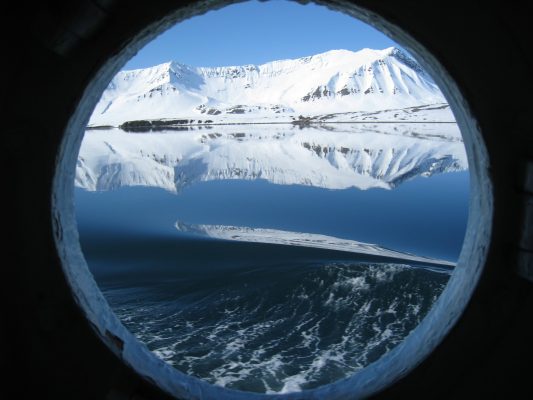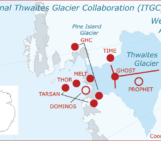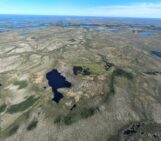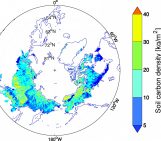
No need to be a superhero to momentarily escape your everyday life!
For that you, can just rely on the EGU Cryosphere Blog, which cares for taking you on trips to all sorts of remote and cool places (OK, OK we have to admit that some of these places are indisputably cold 🙂).
The picture of this week was taken through the porthole of a boat in the middle of Isfjorden, one of the largest fjord in Svalbard .
What is Svalbard and why should we care about it?
Svalbard is not only the mythical home of Phillip Pullman’s armoured bears but it also an archipelago (island cluster) north of Norway, in the Arctic circle. 60 % of its surface is covered by glaciers (1615 in total) which hold enough ice to raise global sea level by 19mm. These glaciers are very varied, covering a wide range of different ice dynamic types. For example – you can find tidewater glaciers (terminating at floating ice shelves in the sea), surging glaciers (which experience cycles of rapid speed-up and slow-down) and ice caps (on the Eastern Islands).
Svalbard is a place for adventurous cryospheric fieldwork related on this blog and the subject of much scientific study, but here are a few reason why this place is significant:
- Enhanced warming is currently occurring in the Arctic as a result of polar amplification.
- The glaciers and ice caps in Svalbard are currently losing 5 ± 2 Gigatons of ice per year (IPCC, 2013).
- Despite its very northern latitude (74° to 81° north), the climate in Svalbard is relatively warmer than in other islands at the same latitude. This due to the influence of the warm north Atlantic current that, in the winter, warm Svalbard up to 20°C, compared to its Russian and Canadian Arctic counterparts.
Does anyone live there?
It may surprise you to know that the Svalbard area counts more polar bears (~3500) than people living there (~2,650) ! Being sparsely populated, however, doesn’t prevent the Archipelago from having human activities such as coal mining, tourism and scientific research.
The image comes from imaggeo, what is it?
You like this image of the week? Good news, you are free to re-use it in your presentation and publication because it comes from Imaggeo, the EGU open access image repository.
(Edited by Emma Smith)




